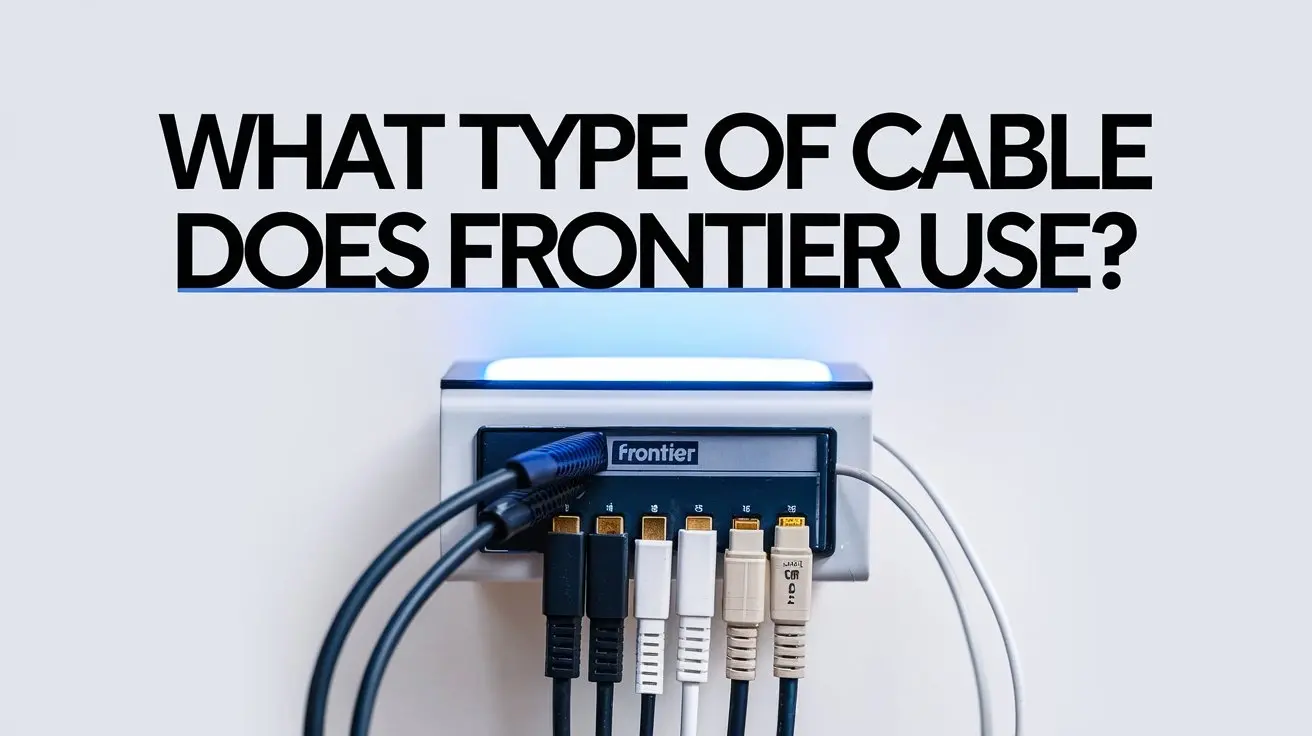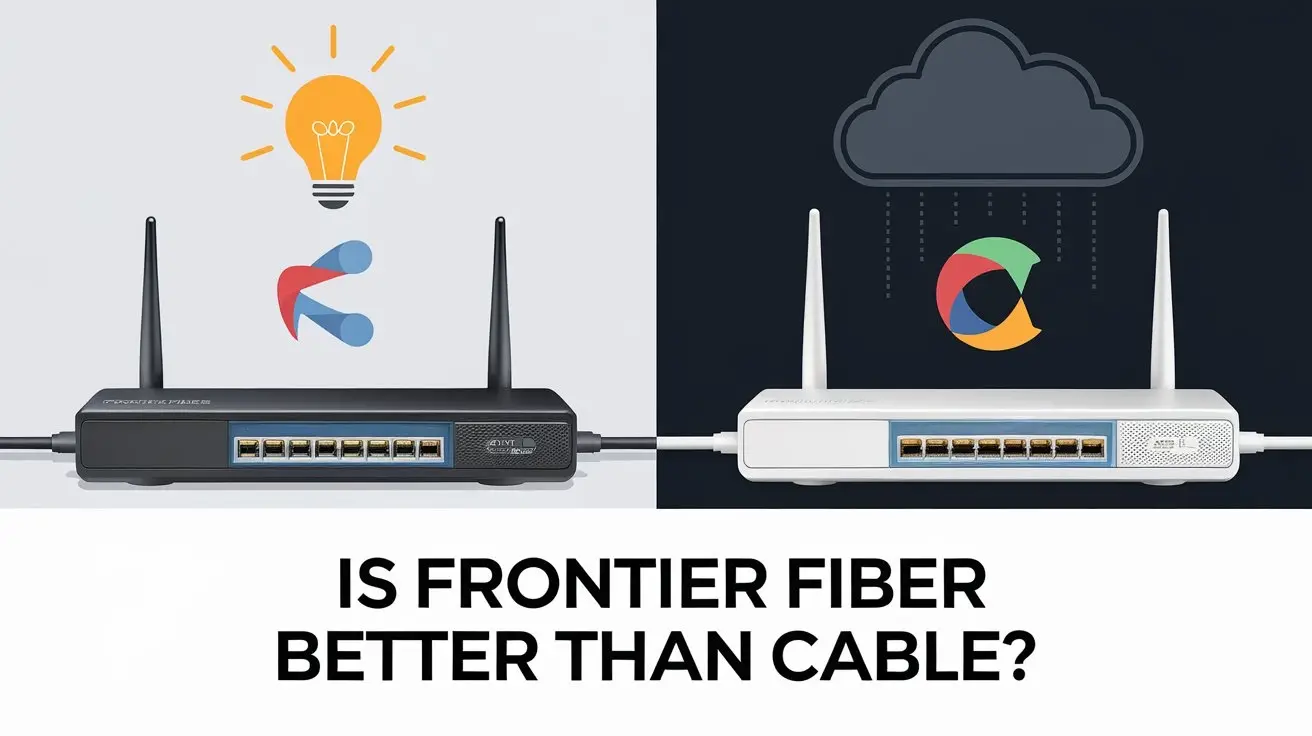What Type of Cable Does Frontier use?

When choosing an internet service provider (ISP), one of the key factors consumers consider is the type of cable used for the connection. The type of cable directly influences the quality, speed, and stability of the internet service. Frontier Communications, a major ISP in the United States, provides several types of internet services to its customers. So, if you’re considering Frontier for your broadband needs, it’s important to understand what type of cables the company uses to deliver its services. In this article, we’ll explore the various types of cables used by Frontier and how they affect the service you’ll receive.
Types of Internet Services Offered by Frontier
Before diving into the specifics of the cables Frontier uses, it’s essential to understand the different internet technologies the company offers. Frontier primarily provides three types of internet services:
- Fiber Optic Internet (Frontier Fiber): This is the fastest type of internet Frontier offers, providing high-speed broadband through fibre-optic cables. Fibre-optic internet can deliver speeds up to 5,000 Mbps, depending on your plan and location.
- DSL (Digital Subscriber Line): DSL is a more traditional form of broadband internet, which uses copper telephone lines to deliver internet access. Although DSL speeds are generally slower than fibre, they still offer reliable internet access for households and small businesses.
- Fixed Wireless Internet: In some rural or underserved areas, Frontier offers fixed wireless internet. This service uses radio signals transmitted from wireless towers to provide internet access. It’s generally slower than both fibre and DSL but can be a viable option for locations where other types of broadband are unavailable.
Now that we know the types of internet Frontier offers, let’s look into the cables used to deliver each of these services.
Fiber Optic Cables: The Backbone of Frontier Fiber
When it comes to the fastest internet connection available, fibre-optic cables are the key. Frontier’s fibre-optic internet service uses fibre-optic cables, which consist of thin strands of glass or plastic. These cables transmit data as pulses of light, allowing for extremely fast speeds and greater bandwidth.
Advantages of Fiber-Optic Cables:
- Blazing Fast Speeds: Fiber-optic cables can provide speeds up to 5,000 Mbps, making them ideal for activities like streaming in 4K, online gaming, and large file uploads and downloads.
- Higher Bandwidth: Fiber can handle a much larger amount of data simultaneously, meaning more users can connect without sacrificing speed.
- Reliability: Fiber-optic internet is less prone to interference and degradation over long distances, making it a more stable and reliable option than traditional copper cables.
- Future-Proof: Fiber-optic technology continues to evolve, ensuring that the service can be upgraded to meet future demands for faster speeds and higher data usage.
Frontier Fiber is available in select areas, particularly in urban regions and suburban communities. However, the availability of fiber internet is still limited in some rural locations. To check if Frontier Fiber is available in your area, you can visit their website and enter your address.
DSL Cables: Copper Wires for Traditional Broadband
If you live in an area where Frontier Fiber isn’t available, Frontier’s DSL service may be an option. DSL internet uses copper telephone lines to deliver broadband service. While copper wiring is older and slower than fibre-optic technology, it still provides a stable and affordable connection for most users.
DSL speeds typically range from 1 to 100 Mbps, depending on factors like distance from the provider’s central office and the quality of the copper lines. While DSL is sufficient for many basic internet activities like browsing the web, checking emails, and streaming standard-definition video, it may struggle with more demanding tasks such as 4K streaming or online gaming.
Advantages of DSL Cables:
- Availability: DSL is widely available because it uses the existing copper telephone lines. If you live in a rural or suburban area, there’s a good chance that DSL will be available.
- Affordable: DSL is generally more affordable than fibre-optic internet, making it an attractive option for households with basic internet needs.
- Reliable: DSL can offer a reliable internet connection, although it is more susceptible to interference and signal degradation over long distances compared to fibre-optic internet.
DSL’s main limitation is its speed. While it offers a reliable connection, it can’t match the performance of fiber-optic internet. However, for many people, especially those who don’t need ultra-fast speeds, DSL is a solid and cost-effective option.
Fixed Wireless Cables: Connecting the Unconnected
In areas where Frontier’s fiber-optic or DSL services aren’t available, the company offers fixed wireless internet. This type of service uses radio frequency signals rather than physical cables to deliver broadband internet to customers.
Fixed wireless broadband requires a small antenna (usually installed on the roof or outside of the home) that communicates with a nearby wireless tower. These towers transmit radio signals that deliver internet access to the antenna, which in turn connects to a modem inside your home.
While fixed wireless internet isn’t as fast as fiber or DSL, it provides a useful solution for areas where wired broadband services are not feasible. Typical fixed wireless speeds range from 10 to 100 Mbps, depending on your location and network congestion.
Advantages of Fixed Wireless Cables:
- Availability in Remote Areas: Fixed wireless internet is an excellent option for customers in rural or underserved areas who don’t have access to fiber or DSL services.
- No Need for Physical Cables: Since it relies on radio signals, fixed wireless doesn’t require any digging or extensive infrastructure. This makes it quicker and easier to install.
- Cost-Effective: For Frontier, the cost of deploying fixed wireless internet is lower than laying fiber-optic or copper cables, which may translate to lower prices for consumers in certain areas.
However, fixed wireless has its limitations. The service can be affected by physical obstructions like tall buildings or trees, and weather conditions can also interfere with the signal. Additionally, speeds can vary depending on network congestion and distance from the nearest wireless tower.
What Type of Cable Does Frontier Use? A Summary
The type of cable used by Frontier depends on the type of service you subscribe to:
- Fiber-Optic Cables: Used for Frontier Fiber, offering the fastest speed test and highest reliability.
- Copper Telephone Lines: Used for Frontier’s DSL service, providing an affordable but slower connection.
- Radio Frequency Signals: Used for Frontier’s fixed wireless internet, a wireless solution for remote areas with decent speeds and coverage.
Each type of cable or signal has its pros and cons, depending on your location, budget, and internet usage. If you’re looking for the fastest and most reliable internet, fiber-optic is the way to go, but if fibre isn’t available in your area, DSL or fixed wireless could still be a good option.
Before signing up for service, make sure to check which types of internet are available in your area and choose the one that best meets your needs. Frontier provides a variety of broadband options, so there’s a solution for nearly every type of internet user.




